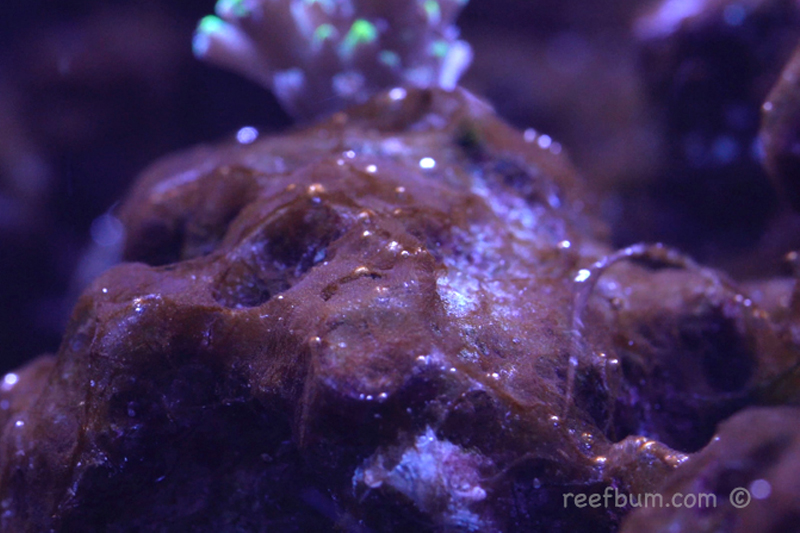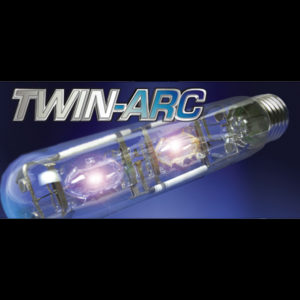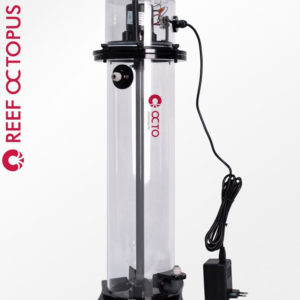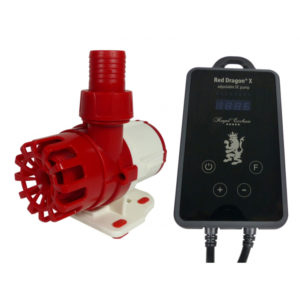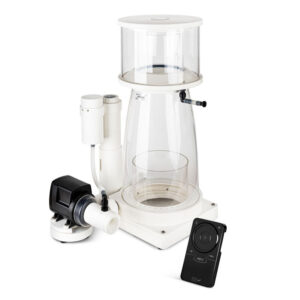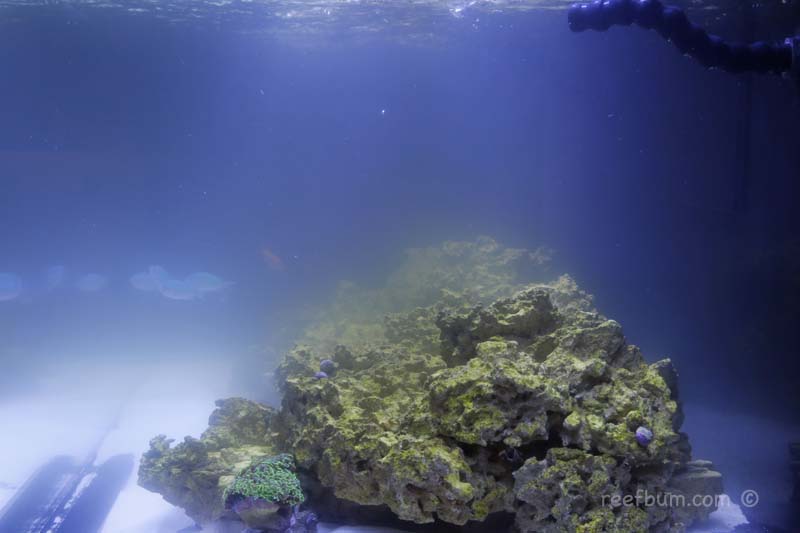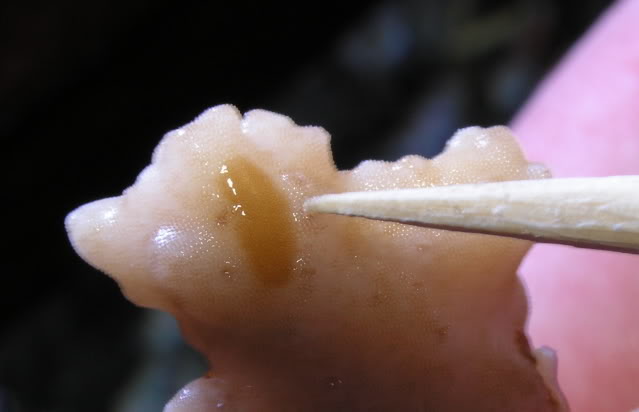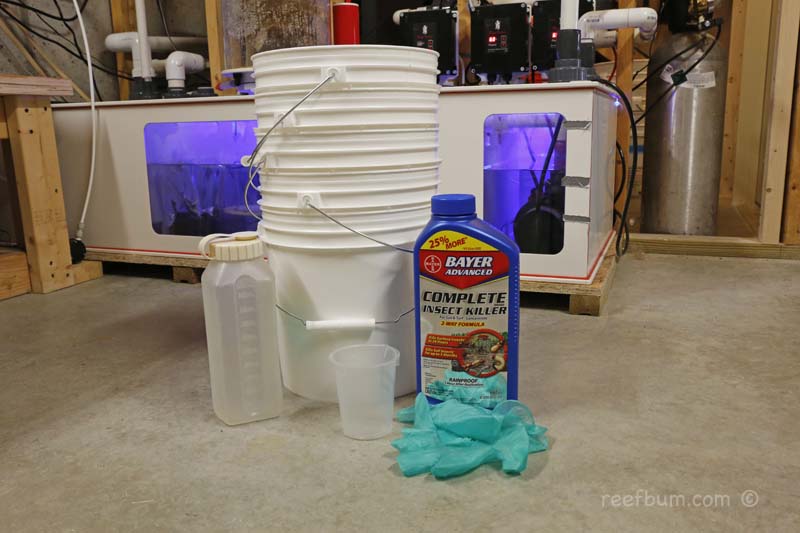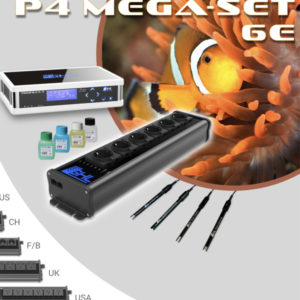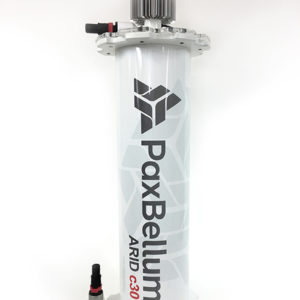Despite my best efforts to avoid an ugly phase with my new peninsula tank, one did pop up at the seventh month mark. I had dinos and the rock and bottom of the tank were engulfed by this nasty stuff.
How Did the Outbreak Start?
At that point I had a good number of frags in the tank and I feared a bunch would be lost. What happened to kick start the outbreak? I believe it was due to a sudden in-balance in my tank.
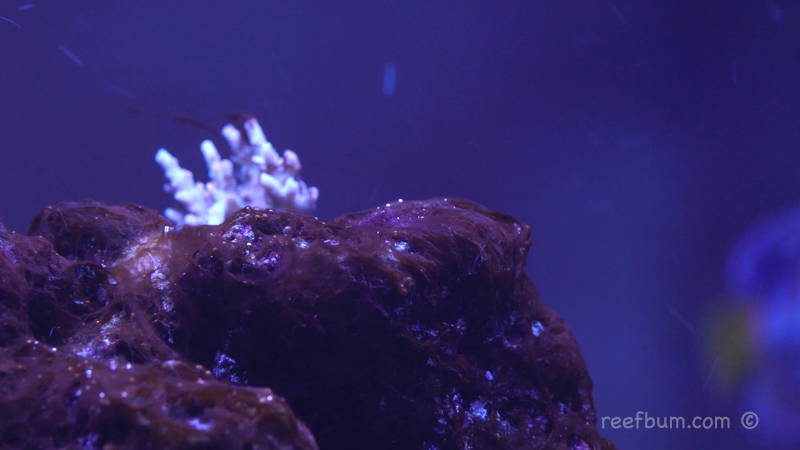
I had very low nutrients and I decided to elevate them by feeding the tank more, a lot more. Dinos can thrive when nitrates and phosphates are at or near zero. My plan was to nip things in the bud by using more coral and fish food.
In retrospect, I believe the significant increase in food led to my tank’s imbalance and, ultimately, the dinos. Nothing good happens when you make sudden changes to a reef tank. I should have taken things slower.
Treating with UV
So what did I do to tackle the problem? Step one was to ID the dinos under a microscope. Fortunately, I discovered I had a type of dinos that goes into the water column when the lights are off. When dinos go into the water column they can be zapped by a UV sterilizer. I did a little research and settled on a 57W unit, which can treat up to 355 gallons of saltwater.
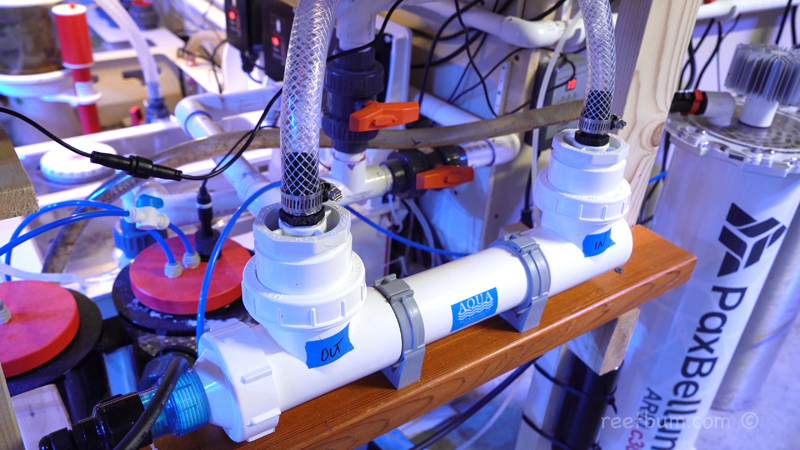
Having a properly sized UV with the right amount of flow is very important to maximize the sterilizing capability against dinos. I went with the manufacture’s recommendation for flow, although some feel you should go even lower to increase contact time. I hesitated to do this since I was worried about burning out the bulb.
Siphoning Dinos + Blackout
Before deploying my UV, I siphoned up as many of the dinos as I could. Having no sand was a blessing because it made it much easier to suck up the dinos on the bottom. I also planned to do a three-day blackout.
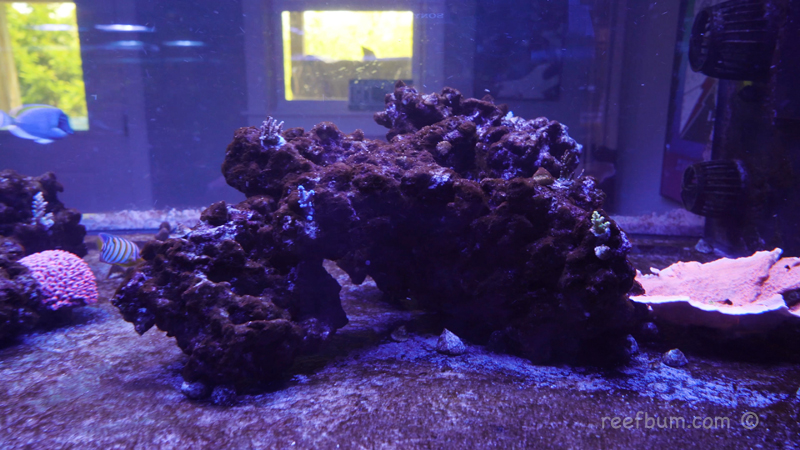
I put the input and output of the UV in my sump (the input was upstream from the output). There is a belief that a UV should be in the display tank when fighting dinos since that is where they are most concentrated. However, I did have dinos in my sump so I opted to try the UV in that location first. If it didn’t work I could always move the UV to the display.
I turned the UV on when I started the blackout and kept my fingers crossed. After two days of darkness some of my frags became stressed out and died. I didn’t want to lose any more corals so I decided to turn the lights back on.
Raising Nutrients
Another thing I decided to do was to dose nitrates and phosphates to elevate nutrients. But this was done sloooooowly. I also stopped using coral food since it had amino acids. Anecdotal evidence suggests that aminos can feed dinos. How did things pan out? Most of the dinos were gone after two days, a very encouraging sign. A week later they were all gone. Three months in and still no dinos. Fingers crossed.
Using UV on a Permanent Basis
I planned to run UV for only a few weeks but decided to keep it on the tank permanently. I never thought it was worth running UV on a reef tank 24/7 but this case of dinos changed my mind. My big hesitation was UV could potentially kill beneficial bacteria that reside in the water column. But most beneficial bacteria colonize rock, sand and other surfaces in the tank so most are not free floating.
Other Benefits with UV
There are other added benefits with UV. One is that it can help to prevent certain fish diseases by killing parasites in the water column. A UV can also improve water quality and prevent certain types of algae outbreaks. I liked the UV so much on the new tank I decided to add one to my established 187 gallon tank. The aforementioned benefits were appealing and I figured it would be a great way to prevent a potential dinos outbreak. Yes, you can teach an old reefer new tricks 🙂
Additional Resources
If you would like some help with a new tank build, including help designing a custom aquarium, or help re-configuring your current setup then you can visit this page for more information. And if you are looking to add some equipment, I do sell GHL, Pax Bellum, Reef Octopus Calcium and Kalk Reactors and Royal Exclusiv products, including Dreamboxes, which is the equipment I use and recommend. I also sell Reef Brite metal halide and LED fixtures as well as Maxspect & IceCap Gyres.
As for additional insights and information, please explore my many other reef tank and SPS related articles as well as my YouTube channel. For an even deeper dive into reef tank care you can check out my Reef Keeping Master Class. This online course is an immersive and one of a kind educational tool designed to help reef aquarium hobbyists build and maintain a beautiful SPS reef tank. The course is a series of video presentations with some supplemental video from my YouTube channel. There are also quizzes to help students retain and understand the information presented in the course.
Need some frags…..I can help with that as well 🙂 Please visit my SPS Frag store to see what is available.

